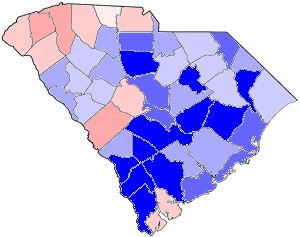Solar PV Takes Room — But Is That the Gating Factor?
Readers may want to check out Christopher Willis’ excellent comment on my post yesterday on nuclear and solar energy, in which he points out that a complete replacement for the energy Americans consume would require enough solar PV to cover the entire state of South Carolina.
I’ve always argued (though it’s the ultimate moot point, because we’re not doing it anyway) that the acreage really isn’t the gating issue. If there weren’t other concerns, I’m sure, if I could provide enough education on the subject, I could get the average American to vote for a distributed set of solar arrays totaling the size of the state of SC scattered around the southwestern desert in exchange for the end of ecologic, health, and national security concerns associated with fossil fuels, and the fear surrounding nuclear. The real issues are the costs of installation, storage, and transmission.


Why the American obsession with ground mounted utility scale solar arrays?
Surely there is sufficient opportunity to use roof space and shade structures (e.g. shaded car parks) to achieve similar power yield without significant land consumption? There is no need to cover deserts and farm land.
Australia now has close to 1 million homes mostly with very small solar arrays and is looking increasingly attractive for solar on commercial, institutional and industrial buildings.
Germany too has a far higher proportion of its solar capacity in small to medium arrays on buildings than the USA.
Gary,
It’s a cost consideration. Labor is often the most significant cost in a solar installation, and rooftop labor is FAR more expensive than ground-based labor… so a rooftop system costs more. Also, if the roof isn’t south-facing, you get a lower capacity factor from a sloped roof than you do from the ground… and only a fraction of the roof space in America is either flat or sloped in the right direction.